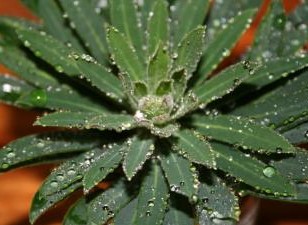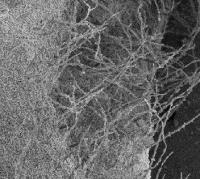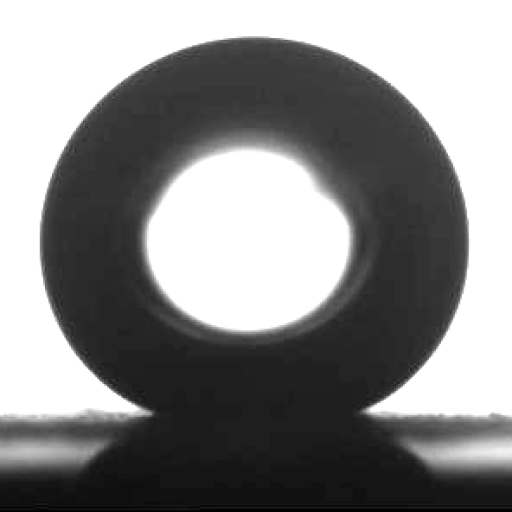Euphorbia

Euphorbia are a large family with many species suitable for garden use, although their sap is somewhat poisonous. Some of them are superhydrophobic and some are not. The upturned leaves of the superhydrophobic ones funnel water to their centre, which then spills down to the roots.

Euphorbia uses hairlike structures to create superhydrophobicity, like the Lady’s Mantle, but not as regimented. The fibres are randomly arranged over the surface and appear to be tangled, as shown in the picture below. All parts of the plant are similar in surface structure and repel water quite well. We believe they channel water in a different way to Lady’s Mantle and suggest that this is a highly efficient way of collecting water from fine rain and mist (read more in the publication below).

There are other plants in the large family including non-superhydrophobic ones and some that look like Cactii but are more strictly examples of convergent evolution (for more information click here).
Publication
Learning from superhydrophobic plants: The use of hydrophilic areas on superhydrophobic surfaces for droplet control N. J. Shirtcliffe, G. McHale and M. I. Newton, Langmuir 25 (2009) 14121-14128
